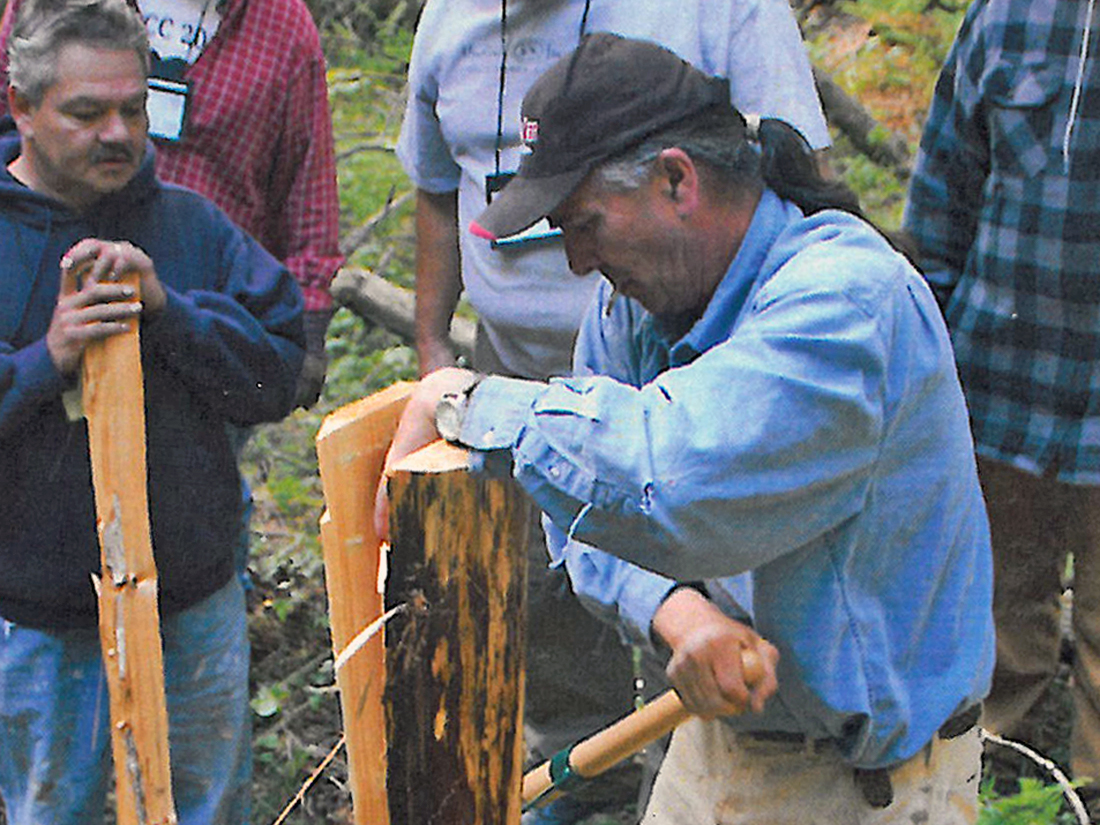Marvin Defoe comes from a family who makes things. His grandfather built snowshoes. His father was a woodcarver.
In his position as LIHTC project manager for the Red Cliff Chippewa Housing Authority, Marvin oversees housing construction projects, including Red Cliff Rehab I, a Low Income Housing Tax Credit (LIHTC) project in Bayfield, WI.
He is also carrying on a building tradition that he learned years ago from tribal elders. He builds birch bark canoes or “wiigwaasi-jiimaan” in Chippewa. Marvin has been building canoes since he was 18, and he is now considered a master canoe builder.
“The way I build canoes, the process, is the way my ancestors did it thousands of years ago,” Marvin told a few of us during a visit to the Travois office recently.
He told us about the first canoe he built and launched in 1976. He traveled around to other places to learn all he could about the process, and he even went to Oregon to get cedar. He had big plans about taking it down the Mississippi River, but that year, the river was flowing at only 1 mile per hour. They launched the canoe in mid-October, and it snowed the first three days.
“The river froze on us,” he said. “We didn’t make it.”
Since then, he has honed his craft. It takes him about six weeks to build a canoe, depending on the size and intricacy. He builds about one canoe per year, and he has made canoes ranging from 12 feet to 40 feet long. He built a canoe in 2008 while on site at the Smithsonian’s National Museum of the American Indian in Washington, D.C., and it is still on display today.
If you’re ever visiting the Red Cliff Band or want to take a trip to Lake Superior, you can also find one of his canoes in the lobby of the Legendary Waters Hotel and Casino.
The Travois office will also soon feature one of Marvin’s canoes. We are honored that he agreed to build an 8-foot scale-model Chippewa long-nose style canoe for us.
He is currently gathering the materials for the canoe: birch bark, cedar, pitch and roots.
“Everything is gathered. Nothing is store-bought,” he told us.
He sent us an update recently by email. He said: “I went in the mosquito-infested woods and got some spruce roots for the binding. And I’ll be gathering bark if it warms up more.”
Marvin expects to have our canoe ready by August. We plan to display it with photos to help explain the process. It will be a wonderful addition to our office, and we thank Marvin for sharing this tradition with us!


